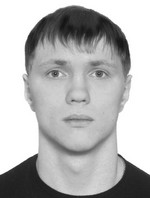Factors of influence on 13-14 years-old boxers' training quality
Фотографии:
ˑ:
Fizicheskaya kultura: vospitanie, obrazovanie, trenirovka №1-2017, pp.34-36
UDC 796.83
Dr.Hab., Professor I.S. Kolesnik
Ulyanovsk State Pedagogical University named after I.N. Ulyanov, Ulyanovsk
Choice of a vocational sport discipline will be driven by the real individual resources and traits to mobilize the athlete’s resource for high competitive success and due self-fulfilment in the sport. The individual competitive accomplishments generally depend on a variety of factors of influence on the achievable athletic fitness rates. The article considers the effects of the relevant genetic, physiological, psychological, educational and social factors on the quality of the general physical and technical training of the 13-14 years-old boxers in the primary sport training stage. Comprehensive studies of these factors and their effects on the education and training process efficiency give the means to find whether or not the individual latent athletic traits and resources are adequate for success in the potential vocational sport discipline. The study data and analyses demonstrate that underestimation of even one of the above key factors may largely hinder progress of athlete on the way to a top mastery in the sport. These factors will be perfectly understood and taken into account in the training and education system design and management process with the most appropriate and effective training and education tools and methods and due forms of the training sessions being applied; and due sets of education conditions and effect being established for success of the athletic training process. An educational experiment under the study showed the quality of an athletic training system being largely dependent not only on the genetic and physiological factors, but also on the psychological, educational and social ones that are still mostly underestimated by the modern boxers’ training systems – that should be better customized to the individual values, forecast professional careers and social roles of the athlete in the relevant social environments.
Keywords: boxing, primary sport training, methodology, educational experiment.
References
- Anokhin P.K. Uzlovye voprosy teorii funktsionalnoy sistemy [Key issues of functional system theory]. Moscow: Nauka publ., 1980, 196 p.
- Degtyarev I.P. Razvitie nauchno-metodicheskikh osnov kursa spetsializatsii i podgotovki spetsialistov na kafedre boksa [Development of scientific and methodological foundations of specialization and training course at boxing department]. Teoriya i praktika fiz. kultury, 1997, no. 4, pp. 43-45.
- Kolesnik I.S. Osnovnye napravleniya povysheniya effektivnosti sistemy sportivnoy podgotovki kvalifitsirovannykh bokserov [Basic directions of increase of efficiency of skilled boxers' athletic training system]. Moscow: Flinta, Nauka publ., 2010, 350 p.
- Kolesnik I.S. Rol afferentnogo sinteza v stanovlenii tekhniko-takticheskoy podgotovlennosti bokserov massovykh razryadov [The Role of Afferent Synthesis in Formation of Technical-Tactical Fitness of Boxers of Mass Grades]. Teoriya i praktika fiz. kultury, 2014, no. 4, pp. 70-73. Impakt-faktor – 0,114.
- Kolesnik I.S. Intellektualnaya podgo¬tovka bokserov [Intellectual training of boxers]. Moscow: Teoriya i praktika fiz. kultury i sporta publ., 2015, 132 p.
- Nazarenko L.D. Sredstva i metody razvitiya dvigatelnykh koordinatsiy [Means and methods of development of motor coordination]. Moscow: Teoriya i praktika fiz. kultury, 2003, 258 p., il.
- Nazarenko L.D., Anisimova E.A. Vospitanie v sporte [Education in Sports]. Moscow: Teoriya i praktika fiz. kultury i sporta, 2015, 84 p.
- Shiryaev A.G. Boks uchitelyu i ucheniku (izd. 2-e, pererab. i dop.) [Boxing for teacher and student (ed. 2nd, rev. and ext.).]. St. Petersburg: Shaton publ., 2002, 190 p.


